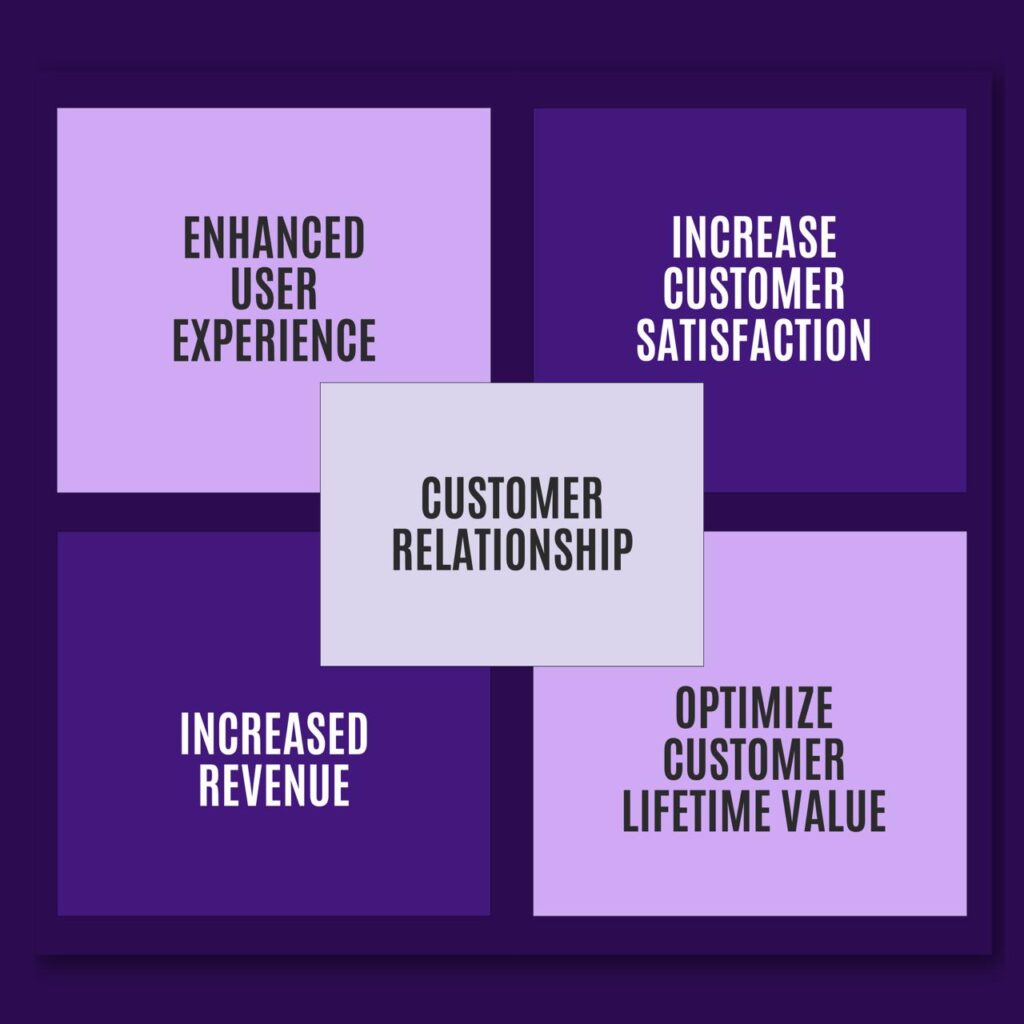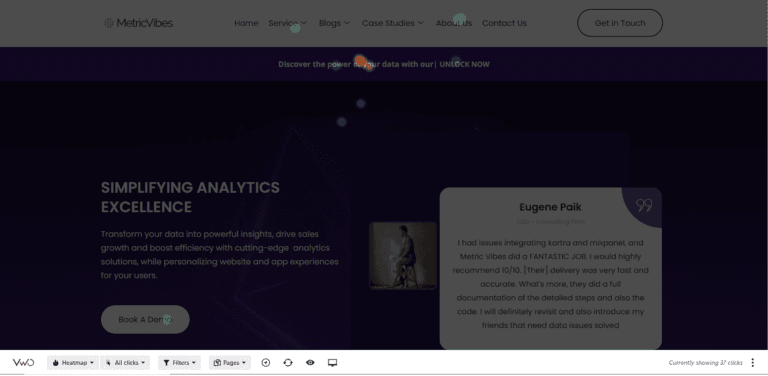CRO / ExO
Enhancing Conversion Rate Optimization (CRO) and Experience Optimization (ExO) with MetricVibes
CRO / ExO Services
Hypothesis Testing
Hypothesis testing is a statistical method used to validate or reject assumptions about a population based on sample data. It helps assess whether observed differences are statistically significant or due to chance.
A/B Testing
A/B testing (split testing) compares two versions (A and B) of a webpage or app element to determine which performs better. It’s commonly used for optimizing landing pages, CTAs, and other user interactions.
Multivariate Testing
Unlike A/B testing, multivariate testing evaluates multiple variations of different elements simultaneously. It helps understand how combinations of changes impact user behavior.
Experience Personalization
Personalization tailors content, recommendations, and interactions to individual users based on their preferences, behavior, and context. It enhances user engagement and satisfaction.
Retargeting
Retargeting (remarketing) targets users who have previously visited your site but didn’t convert. It displays relevant ads to encourage them to return and complete an action (e.g., purchase).
Recommendation Engine
We build recommendation engines analyze user data (e.g., browsing history, past purchases) to suggest relevant content or products. This is importance to enhance user experience on your website
Why Your Business Needs CRO / ExO Services
CRO focuses on refining website design, layout, and functionality to ensure that users can easily navigate and complete desired actions, such as making a purchase or signing up. By improving site usability and eliminating friction points, businesses can create a smoother and more enjoyable user experience.
When users encounter a website that is intuitive and easy to use, their overall satisfaction improves. CRO addresses common user frustrations, such as slow load times or complicated checkout processes, leading to happier customers who are more likely to return.
CRO helps convert more visitors into customers by optimizing key elements like call-to-action buttons, landing pages, and product pages. Even small improvements in conversion rates can lead to significant revenue growth, as more users complete purchases or engage with the business.
CRO helps businesses identify opportunities to maximize the value of each customer over the long term. By improving the overall experience and encouraging repeat purchases, businesses can increase customer retention, drive higher average order values, and ultimately boost the lifetime value of their customers.
CRO facilitates stronger customer relationships by creating interactions that are tailored to individual preferences and behaviors. By continuously improving and adapting based on customer data, businesses can foster trust, loyalty, and long-term engagement with their customers.

Related Blogs

Unlock Visitor Behavior: Master VWO Heatmap & Session Recordings
Use VWO heatmap & session recordings to analyze user behavior, connect with customers, meet goals,

How to Elevate Growth Using Data Driven Digital Strategies
Leverage data driven digital strategies with A/B testing to refine campaigns, enhance user experience, boost

Why Businesses Need To Be Personalize ?
Discover why businesses need to be personalize. MetricVibes helps tailor customer experiences with AI, boosting

Proven Conversion Rate Optimization Strategies To Boost Your Business
Learn the secrets of effective Conversion Rate Optimization strategies to skyrocket conversions, enhance user experience,
Frequently Asked Questions
CRM stands for Customer Relationship Management. It’s a system that helps businesses manage interactions with customers, track leads, and improve communication.
CRM improves customer experience, streamlines sales processes, and provides data-driven insights for decision-making.
No, businesses of all sizes can benefit from CRM by maintaining better customer relationships.
CRO (Conversion Rate Optimization) aims to increase the percentage of visitors who take desired actions (e.g., sign-ups, purchases) on a website.
CRO leads to higher conversions, cost-effective improvements, and a competitive edge.
Strategies include A/B testing, user experience optimization, and behavior analysis.

